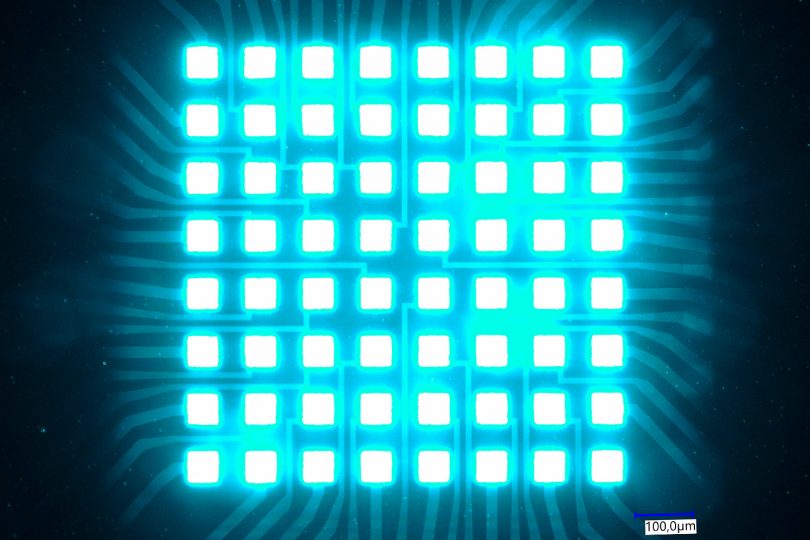Measuring quantum chips Braunschweig researchers build measurement technology for quantum computer chips
How do you actually measure quantum technologies? After all, the bits of a quantum computer are incredibly small and often only last a few fractions of a second at cryogenic temperatures. The TU Braunschweig and the Physikalisch-Technische Bundesanstalt are jointly researching precisely these limits of the measurable, for example in the QuantumFrontiers Cluster of Excellence. With ‘HIQEQS’, the two project partners are now embarking on a German-Dutch collaboration with five other partners for a novel measurement concept for quantum technologies.

In many quantum technologies, the signals have to cross several temperature levels to reach the cryogenic quantum components. Picture credits: Quantamap
The Braunschweig part of the HIQEQS project is tackling three challenges at once: firstly, controlling an atomic force microscope, secondly, controlling a special magnetic measuring tip and thirdly, keeping an electronic eye on the object being measured. Particularly tricky: the measuring tip and quantum chip only work if the temperature remains constant at around -269 degrees Celsius. As every signal brings energy into a sensitive system, the narrow path into the cryogenic environment is the bottleneck for numerous quantum technologies. At the same time, the signals must be extremely low-noise so that the precision of the quantum sensors can be realised at all.
Braunschweig research symbiosis
The collaboration between Professor Vadim Issakov’s Institute for CMOS Design at TU Braunschweig and Dr Mark Bieler’s PTB Department of Quantum Electronics is like two sides of the same coin. The team wants to solve all three challenges for signal generation with a unique system. To this end, integrated control electronics for PTB’s quantum-precise signalling hardware are being developed at TU Braunschweig. Not only are components that previously consisted of 50-centimetre-long circuit boards shrinking to just a few square millimetres. Together, the two groups want to make the underlying Josephson technology usable in completely new frequency ranges.

Professor Vadim Issakov heads the Institute for CMOS Design at TU Braunschweig. Picture credits: Max Fuhrmann/TU Braunschweig
TU Braunschweig project manager Professor Vadim Issakov: “For the project to be successful, we have to be able to operate the three different frequencies in the cryogenic range. The microscope needs thousands of processes per second (kilohertz), the SQUID sensor needs several million (megahertz), and a quantum chip to be measured usually even works in the billion range (gigahertz). If we are successful here, we could read the chips of superconducting quantum computers with up to 10,000 times better precision.”
The new concepts can also improve the supercomputers themselves: With ever higher quantum bit numbers (qubits), the signal utilisation of the cryogenic bottleneck also increases. As a result, signals become noisy and the qubits become defective. Issakov: “With HIQEQS, we are working on a scalable architecture for low-noise signals. This will primarily improve our measurement technology in the project. However, the area of application for such signal sources and controls is also transferable to many other technologies with similar challenges.”
About the project
The HIQEQS (Highly Integrated Quantum Electronics for Quantum Sensing) project brings together seven partners from Germany and the Netherlands: Infineon AG (coordination), TU Braunschweig, Physikalisch-Technische Bundesanstalt, TU Delft, Supracon AG, QuantaMap B.V, and Delft Circuits. Together, the partners will receive almost 5 million euros in funding from the Federal Ministry of Education and Research (BMBF) and Quantum Delta NL. Just under one million euros of this will go to TU Braunschweig. The project started at the beginning of 2025 and will run for three years.


